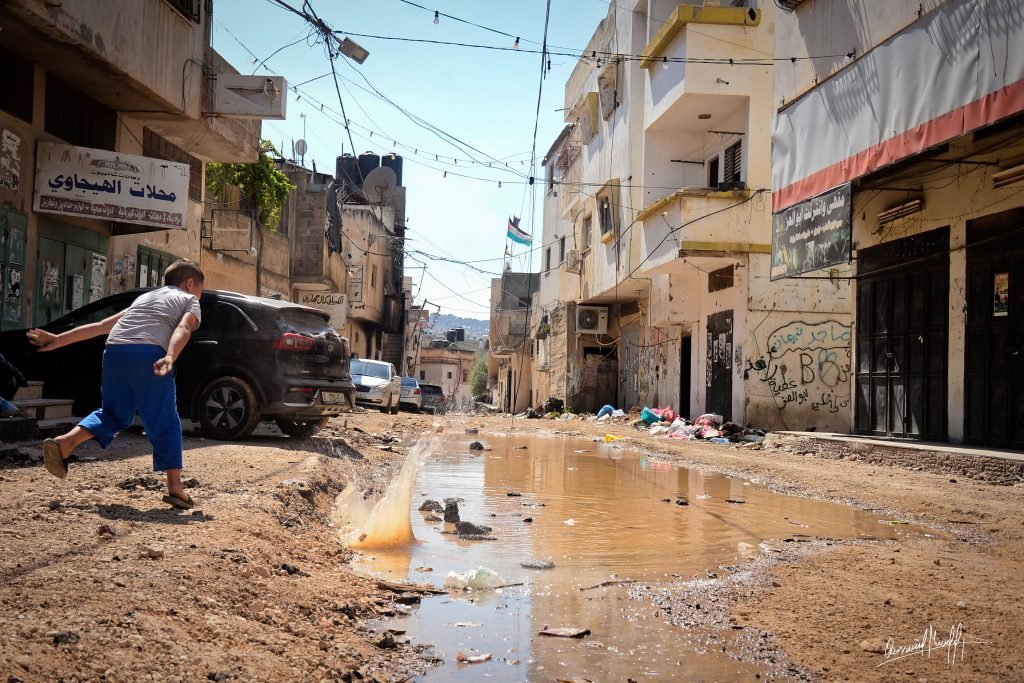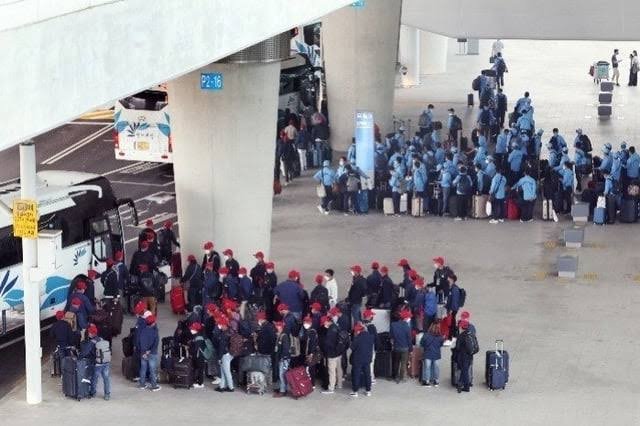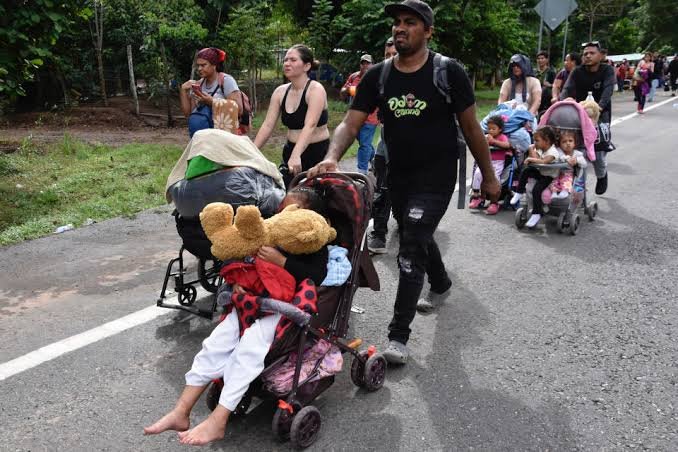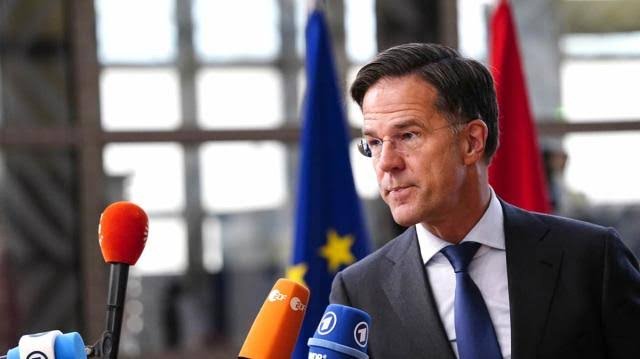Photo credit: Mondoweiss
Since October 7 Israel’s crackdown on the West Bank town of Tulkarem has intensified. Raids are almost daily, have been more destructive and lethal, and have transformed the lives of more than 8,000 Palestinians living in the city’s refugee camps
The sun set on Tulkarem’s damaged streets last Saturday, August 3, 2024, after yet another violent afternoon. Residents returned home after an Israeli raid, during which Israeli bulldozers destroyed main roads, opened fire indiscriminately, and fired tear gas at journalists. Just hours after residents began assessing the destruction to their community from the Israeli raid, they received news of another tragedy: nine young men had been assassinated by Israeli forces in two separate airstrikes in the city
Tulkarem, a small city in the northwestern occupied West Bank, just on the Green Line, has become the primary target of Israeli raids in recent years, ever since the resurgence of armed resistance groups in the area in 2022. The formation of the ‘Tulkarem Brigade’, which operates primarily out of the city’s two refugee camps, has prompted an escalation in Israeli military operations, with Israel using everything from foot soldiers to drone strikes to try and quash the armed militias, composed mostly of local young men
Since October 7, however, the crackdown on Tulkarem, particularly the Nur Shams refugee camp, has intensified. Israeli raids have become an almost daily occurrence. The raids are more destructive and lethal, longer in duration, and have transformed the lives of the more than 8,000 Palestinians living in the camps, all of them families who were expelled from their original towns and villages in 1948. Life for them has become a constant struggle for survival under Israeli assault, which has impacted every aspect of daily life
Anguish, destruction, and psychological impact
During one of the many raids on Nur Shams in the past 10 months, Israeli soldiers arrested Samih Abu Harb, from his home in the camp. Samih is a father in his late forties who has worked most of his life in construction, like most men in the camp. When he was arrested, Samih spent the night detained in a large community hall in Nur Shams, alongside dozens of Palestinian civilians, not knowing when they were going to be released. Some carried children, some were old and sick, and they were all taken from their homes by Israeli forces. Around 45 people – men and women, young and old – watched as Israeli soldiers called in teenage boys for interrogation in the adjacent toilet rooms.
“The soldiers raided my home and searched every room, then took me. It was around 4:00 pm, and they only released me the next morning,” Abu Harb told Mondoweiss. “Many of the detainees in the hall were women or teenagers, some of whom were interrogated. Nobody slept, as everybody was wondering when the soldiers were going to release us,” he recalled.
It was mid October 2023, days after the October 7 attack and the beginning of the Israeli assault on Gaza, and detainees were unaware that Nur Shams had just entered a new phase of Israeli violence. During that raid, Abu Harb could only think of the rest of his family members at home, hoping that none of them would suffer the same fate as his son, Ayed, who was killed in another raid a month and a half earlier
“I kept thinking of Ayed, as his loss was still recent, worrying for the rest of the family as I heard the occupation vehicles and gunfire outside,” said Abu Harb
While Abu Harb and the others were trapped inside the community hall, in the streets of Nur Shams, Israeli bulldozers were destroying the streets’ asphalt, damaging water and sewage networks. A practice that existed prior to October 7, but has since become a systematic and routine part of Israeli raids on Tulkarem and its refugee camps
“When I was released the next morning, I walked home amidst bulldozed streets and damaged buildings. Sewage water was running in the open, pipes were torn out, and piles of destruction and rubble were scattered everywhere,” Abu Harb recounted. “It was a painful sight, and all I could think of was Gaza, and that we were living in the same situation in a sense.”
“Every time, the municipality begins work to fix the infrastructure [after a raid] , but soon another raid happens and the services are destroyed again,” said Abu Harb. “Most residents in the upper parts of Nur Shams depend currently on buying water tanks of 3 cubic meters each, costing up to 250 shekels, which is a high burden for most households,” he explained
The sight of renewed destruction and rubble has changed the landscape of Nur Shams, increasing the psychological impact on residents. The heaviest impact has been on women and children, as explains Nehayah Al-Jundi, a resident of Nur Shams, a mother, and director of the handicapped children rehabilitation center.
“My daughter understands what happens in the camp, which makes it difficult to protect her from the reality, although she adapts and understands, she can’t hide her fear, which is constant,” said Al-Jundi. “For us mothers, it is difficult to protect our children from the trauma, because we are traumatized ourselves,” she added.
“The same is true for us as a community. At the rehabilitation center, providing our services has become very difficult as the center itself has been raided by the occupation forces six times,” she noted. “They damaged the elevator, some of the educational toys, and other contents, but we continue to try to relieve children and especially the handicapped.”
The impact of Israeli violence on the wider community has always been part of Israel’s control policy in areas of resistance activity. For many human rights groups, and according to Israeli military doctrine, this is part of a collective punishment strategy, aimed at weakening the popular support base of the resistance.
“We have noticed that children’s school performance has dropped dramatically, as many of them haven’t been going to school regularly because of the repeated raids. Many suffer from distraction, uncontrolled fear, and involuntary urination, and for the mentally handicapped ones it is harder, because they don’t understand what happens around them,” Al-Jundi said. “The most difficult trauma for children is the lack of safety, including inside their homes, as many of them have witnessed raids to their homes, arrest of family members, and even their killing.”
Since October 7th, 2023, Israel has killed 606 Palestinians in the West Bank, 298 of them during raids on towns or refugee camps, not including targeted assassinations. Of these killings, 144 were children, and sx were elderly. In Tulkarem, 74 Palestinians have been killed since the beginning of 2024.
No safety, even at home
The raid of private homes is an essential part of Israeli raids on Palestinian communities, especially refugee camps. These raids, which take place in the middle of the night while most families are sleeping, remain traumatic, despite their repetitiveness, because of their violence, as witnessed by Mohammad Elayyan, a resident of Nur Shams.
“The occupation forces raided my home in the beginning of the war,” Elayyan told Mondoweiss. “Soldiers broke into the house and forced all my family into one room, then began to search the house in a violent way, turning over furniture and breaking belongings. Then they arrested my eldest son and left,” said Elayyan. “They released him five hours later, and it was an immense relief for all of us, but until today, we remain in panic of another raid to our home during each raid to the camp,” he said. “We remain also in panic of the news of death, as we expect another killing at each raid.”
Such nightly raids are commonplace across the West Bank, and have been for years. During these raids, Israeli forces often use lethal weapons, resulting in the injury and killing of Palestinians. In places like Tulkarem, where armed resistance groups fight against Israeli soldiers during such invasions, fatalities during raids have become routine.
And while Israeli forces kill fighters, the military also targets and kills civilians – sometimes by stray bullets or by Israeli snipers, who take positions on high locations before the raids. Some deaths are sudden and unexpected, as residents can be killed inside their homes.
“It was one month before the beginning of the war, when the occupation raided Nur Shams as usual,” Samih Abu Harb recalled. “My family and I remained inside the house as the raid began, hoping to stay out of danger, and we remained inside until the occupation forces began to withdraw,” he detailed.
“My eldest son, Ayed, stood on the balcony to watch the withdrawal of the occupation, and I came out on the balcony after him,” Abu Harb said. “Occupation forces were still shooting on their way out, and Ayed fell on the ground shouting in pain, but I thought that he was joking, until I saw the blood.”
“Ayed was a hard-working young man. He was 21, but was already building his own apartment, preparing to start his own family,” said Abu Harb. “The night before his killing, we were talking about his apartment, and how we were going to prepare it. I didn’t imagine I would lose him the next day.”
First published by Mundoweiss.net







